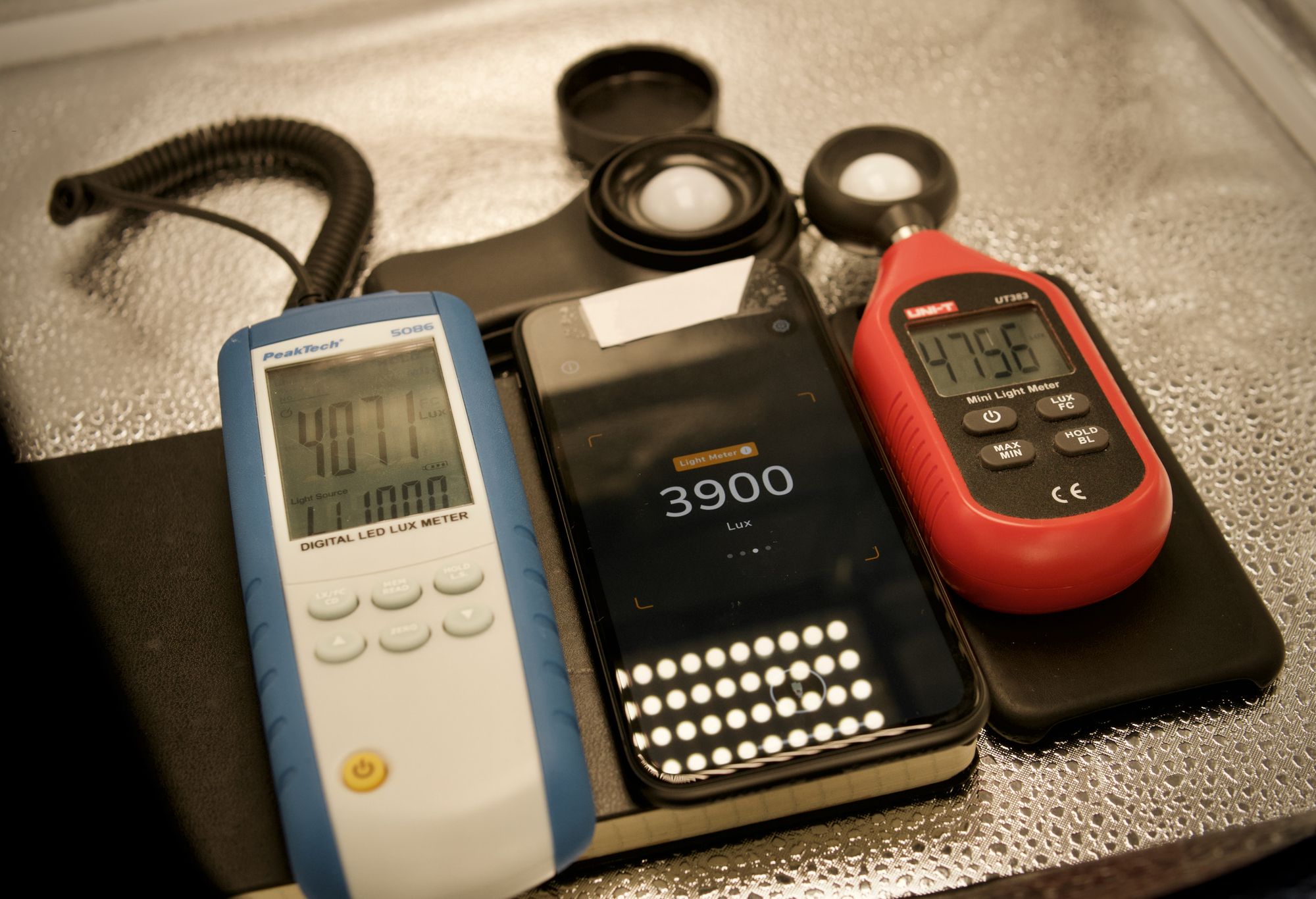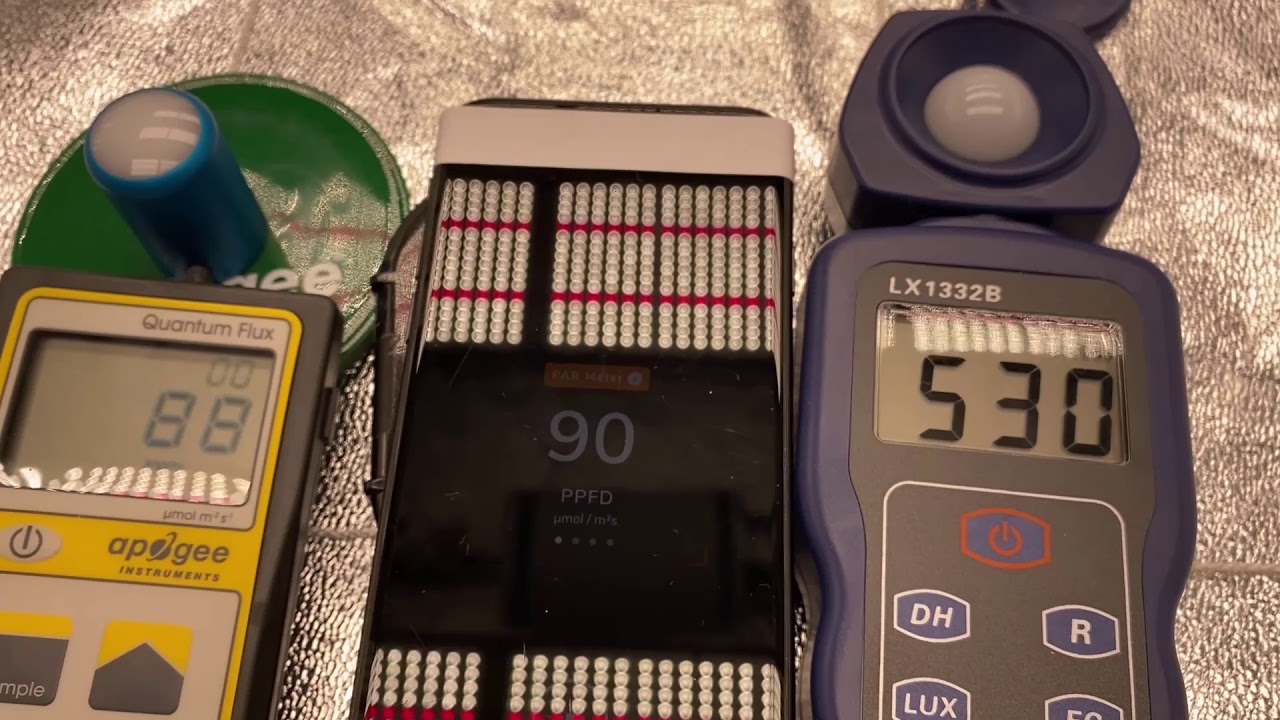As light-emitting diodes (LEDs) continue to grow in popularity, many people are wondering if they can be measured with a lux meter. The answer is yes! In fact, measuring the light output of LEDs is one of the most common uses for a lux meter.
What is a Lux meter?
Lux meters are devices that measure the intensity of light. They are often used to measure lighting levels in offices and other workplaces to make sure that they meet safety standards. Lux meters can also be used to measure the light output of LEDs. They are used for a variety of other purposes as well, such as measuring the light intensity of headlights and streetlights.
A lux meter is a very simple instrument, but it works in a complex way. The device measures light by counting the number of photons that hit a sensor within the device. It consists of a sensor, display screen, and a power source. The sensor is usually an integrated circuit that can detect photons and convert them into electrical impulses.
How do you calculate lux?
The lux (lumen per square meter) is a unit used to measure illumination. 1 lx = 1 lm/m2, which equals 1 cd. The illuminance of 1000 lux on a surface area of one square meter may be generated by dispersing 10 000 lumens uniformly over it.
There are a few different types of lux meters on the market. Some are handheld devices, while others are mounted on poles or tripods. Lux meters can also be incorporated into other types of devices, such as smartphones and digital cameras.
Is a photometer the same as a lux meter?
No, a photometer is not the same as a lux meter. Photometers are for measuring light intensity, while lux meters are for measuring illumination levels. Photometers use color filters to measure different wavelengths of light, and they may have other added features such as timers or data storage capabilities. So if you need to know how much light an LED is emitting, then getting a lux meter would be a great idea!
Photometers, lux meters, and other light measurement devices are important tools for measuring the amount of light that different sources are emitting. Whether you're an engineer working on LED lighting products or a homeowner interested in measuring the brightness of your home's lights, it's important to know about these various types of instruments and how to use them effectively.
Are lux and lumens the same?
No, they are not the same. Lumens are a measure of light output, while lux is a measure of how much light falls on a particular area. A bulb that emits 1000 lumens may provide enough illumination for office space, but if there is only one square meter in the office, it will likely be too bright.
If you need to measure the light output of LEDs or other types of lights, a lux meter is an essential tool to have! It can help ensure that your lighting system meets safety and other standards so that everyone stays safe and comfortable.

How are LED lumens measured?
LED lumens, or the amount of light emitted by LEDs can be measured using a specialized device called a lux meter. A lux meter works by counting the number of photons that strike a sensor within the device. It typically consists of a sensor, display screen, and power source. To calculate LED lumens, the lux value is typically divided by the area over which it is measured (in square meters) to determine how many lumens are being produced per square meter.
There are a variety of different types of lux meters available, including handheld devices, pole-mounted units, and those that are integrated into smartphones or digital cameras. While there is some variation in how different manufacturers measure LED lumens, most follow similar principles for accurate results.
If you need a reliable and accurate way to measure the lumens produced by LEDs, a lux meter is an essential tool to have! Whether you are setting up lighting for your home or workplace or working on a research project measuring light levels, a lux meter can help ensure that you get accurate results.
With all of the benefits offered by modern LED lighting systems, it is no wonder that so many people are looking for ways to determine how much light they produce! While measuring their brightness using traditional methods may be difficult, with the aid of a lux meter this task becomes much simpler. So if you're looking for an efficient and cost-effective way to measure LED lumens, don't hesitate to invest in a quality lux meter today!
Why use a lux meter to measure LEDs?
There are several different ways to measure the light output of an LED. A lux meter is one of the most common methods since it provides quick, accurate results and uses fairly simple technology. Other devices that can be used for this purpose include spectrometers, photodiode meters, luminous flux meters, and colorimeters. However, all of these specialized instruments can be expensive and time-consuming to use. Compared to these other options, using a lux meter to measure LEDs is relatively cheap and easy!
There are several reasons why you might want to measure the light output of an LED with a lux meter. One reason is to make sure that the LED is providing enough light. For example, if you are using an LED flashlight, you might want to make sure that it is providing enough light to see clearly in darkness.
Another reason to measure the light output of an LED is to compare different types or brands of LEDs. This can be helpful when you are trying to choose the best LED for your needs.
How can lux meter LED?
Measuring the light output of an LED with a lux meter is a fairly simple process. First, you will need to find a lux meter that is appropriate for measuring LEDs. Many digital multimeters have a built-in lux meter, so this may be a good option if you already have one on hand. Once you have found a suitable lux meter, the next step is to turn it on and calibrate it if necessary.
Here is a step-by-step guide on how to measure LED with a lux meter:
- Position the LED that you want to measure at least one meter from the lux meter. The direction of the LED does not matter, as long as it is facing away from the lux meter.
- Turn on the LCD screen and adjust its brightness setting if necessary. Always make sure that you can clearly see your results on the screen before taking a measurement.
- Point the sensor toward the front of the LED and press down firmly so that it makes good contact with the surface of the light-emitting diode. This will ensure that your readings are accurate and consistent over time, even if there is dust or other particles between them and the sensor. There may be some light reflected back into your eye from the surface of the LED, but this is not harmful.
- Take a few readings and then average them to get the most accurate result. Be sure to write down your results so that you can refer to them later!
- Repeat steps 1-4 for any other LEDs that you want to measure.
Once you have finished taking measurements, you can compare your results to see which LED is providing the most light. You can also use your results to calculate how much light an LED is emitting in terms of lumens or candela.

How many lux is an LED?
There is no definitive answer to this question, as the amount of lux that an LED emits can vary depending on a number of different factors. Some common factors that can impact the lux output of an LED include the type and quality of the LED, how it is mounted or positioned, and environmental conditions such as temperature and humidity.
However, in general, LEDs are known to emit anywhere from hundreds to thousands of lux, making them an effective light source for a variety of applications. To get more specific results when measuring lux levels with your lux meter, you may want to consult technical specifications for your particular model or consult with an expert in the field.
Overall, using a lux meter to measure the light output of LEDs is a quick and easy way to get accurate results in a variety of situations. Whether you are interested in comparing different LED types or simply making sure that your LED is providing enough light, this simple device can help you get the answers that you need! Do you have any additional questions about how to use lux meters to measure LEDs? If so, be sure to reach out online for more information.
Why do you need to measure LED at all?
There are a few different reasons why you might want to measure the light output of an LED. For example, if you are using an LED flashlight, you might want to make sure that it is providing enough light to see clearly in darkness.
Another reason to measure the light output of an LED is to compare different types or brands of LEDs. This can be helpful when you are trying to choose the best LED for your needs.
Finally, measuring the light output of an LED can also be helpful in troubleshooting situations. If you notice that your LED is not providing as much light as it should be, measuring its output with a lux meter can help you determine whether there is a problem with the LED itself or with the way that it is being used.
Can a lux meter measure UV light?
Because a good lux meter only responds to visible light, a good lux meter can't detect infrared or ultraviolet light. However, some newer lux meters are designed to respond to a wider range of light frequencies, including some infrared and ultraviolet wavelengths.
If you need to measure UV light with a lux meter, then it is important to do your research in advance and find out which models may be able to provide accurate readings for UV light. Depending on the specific application that you have in mind, there may also be other tools or methods that are better suited for measuring UV light.
Overall, if you need to measure UV light with a lux meter, then it is important to consult with an expert or do additional research online before making your final decision. With the right equipment and know-how, however, measuring UV light with a lux meter can be an effective and reliable method for many applications.
Final words
In conclusion, using a lux meter to measure the light output of LEDs is a quick and easy way to get accurate results in a variety of situations. Whether you are interested in comparing different LED types or simply making sure that your LED is providing enough light, this simple device can help you get the answers that you need! If you have any additional questions about how to use lux meters to measure LEDs, be sure to reach out online for more information.